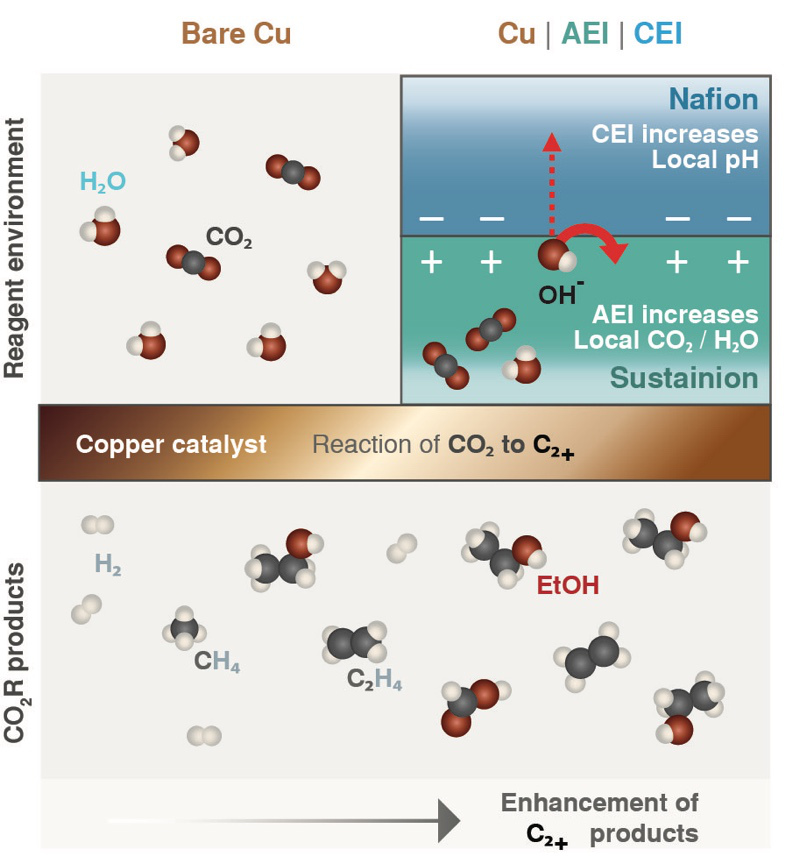“Although we know copper is the best catalyst for this reaction, it doesn’t give high selectivity to the desired products,” Alexis Bell, one of the study’s co-authors, said in a media statement. “Our group has found that you can do various tricks with the local environment of the catalyst to provide that selectivity.”
Bell pointed out that previous studies had established the precise conditions that gave the best electrical and chemical environment for creating commercially interesting carbon-rich products. However, those conditions are contrary to those that naturally occur in a typical fuel cell, which uses a water-based conductive material.

To pinpoint a design that could be used in the aqueous environment of fuel cells, Bell and his team turned to thin layers of ionomers, polymers that allow certain charged molecules (ions) to pass through while excluding others. As a result of their highly selective chemistry, they are uniquely suited to have a strong influence on the microenvironment.
Following a proposal by Chanyeon Kim, lead author of the paper, the researchers decided to apply a thin layer of two common ionomers, Nafion and Sustainion, as well as a bilayer of both ionomers on the surface of the copper catalyst supported by a polymer material, thus forming membranes that they could insert near one end of a hand-sized electrochemical cell.
While feeding CO2 into the cell and applying a voltage, they measured the total current flowing through the cell. Then they measured the gasses and liquids that were collected in adjoining reservoirs during the reaction. For the two-layer case, they found that carbon-rich products accounted for 80% of the energy consumed by the reaction—up from 60% in the uncoated situation.
“This sandwich coating gives the best of both worlds: high product selectivity and high activity,” Bell said. The bilayered surface favoured not only carbon-rich products but also generated a strong electrical current, indicating increased activity.
The researchers concluded that the improved reaction was a consequence of the high CO2 concentration that built up in the coating layer immediately on top of the copper. Additionally, negatively-charged molecules that piled up in the region between the two ionomers created a low local acidity. That combination countered the concentration trade-off that tends to occur in the absence of the ionomer films.
To increase the reaction efficiency even further, the researchers turned to a technique that had been demonstrated before, without ionomer films, as another way to increase CO2 and pH: pulsing the voltage. By using a pulsed voltage with the bilayer ionomer coating, they achieved a 250% increase in carbon-rich products compared to uncoated copper and a static voltage.
These findings led them to realize that while some scientists have focused their work on developing new catalysts, catalyst discovery does not consider the operating conditions. Controlling the environment at the catalyst’s surface is a new and different approach.
“Rather than coming up with a brand new catalyst, we’ve taken what we know about the kinetics of a reaction and used that knowledge to guide our thinking about how to change the environment at the catalyst site,” Adam Weber, a co-author on the paper, said.




